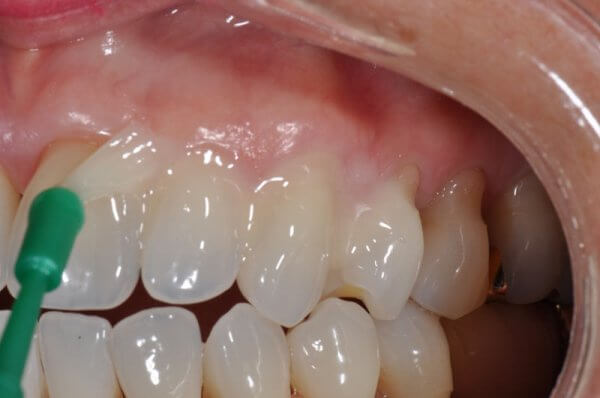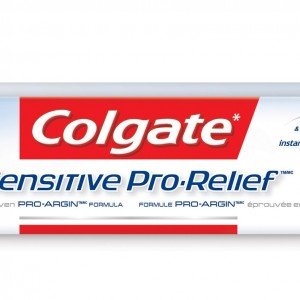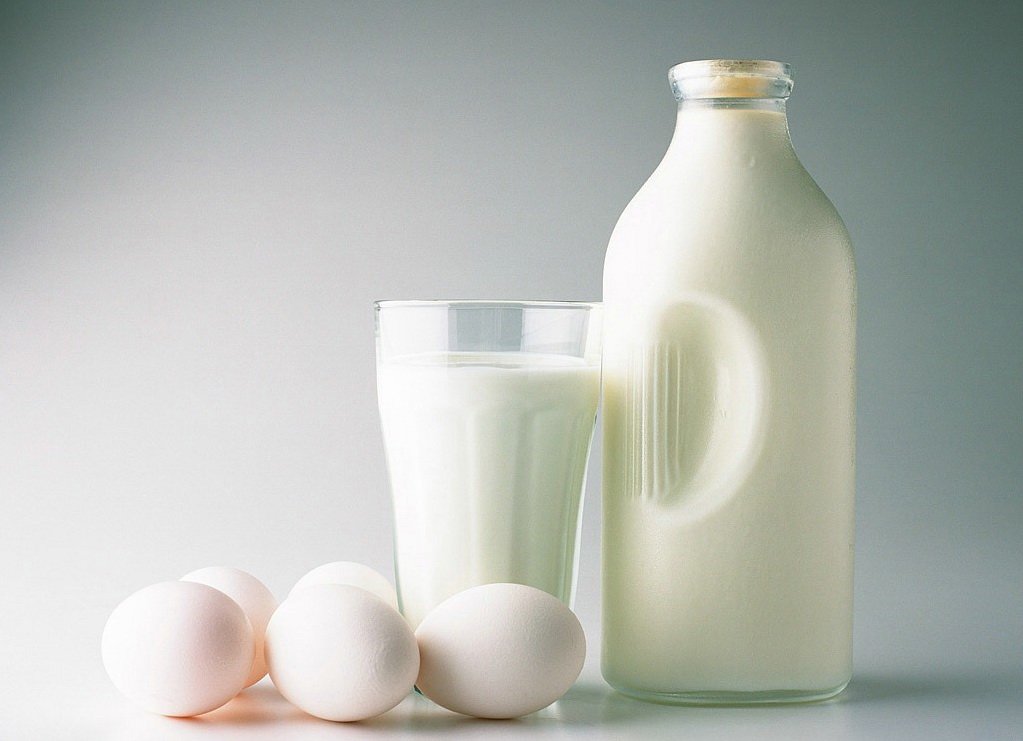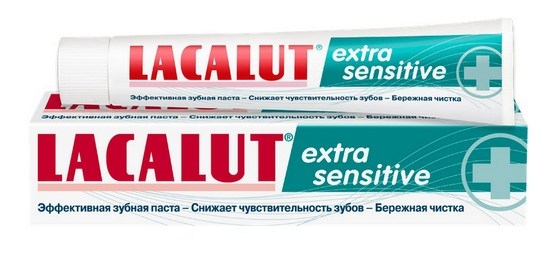Tooth sensitivity treatment drugs. Increased tooth sensitivity: causes and treatment
Increased tooth sensitivity is called hyperesthesia. This is a condition when external irritants affect the pulp - the nerve endings of the tooth. The influence is exerted by mechanical, chemical, thermal irritants. Most often, pain is caused by eating cold or hot food, sweets or sour foods, brushing your teeth with a hard brush or chewing hard foods. In the early stages, treatment is most effective.
Hyperesthesia in Lately the phenomenon is quite common. This nuisance mainly affects women, and is less common in men. Up to 30 years of age, the enamel is still strong; over time, it becomes depleted and microcracks appear, which leads to increased sensitivity. With age, the sensitivity of dentin decreases, and the problem disappears on its own.
The reasons for the development of hyperesthesia can be processes not related to caries:
- Malocclusion, in which it goes to the teeth huge pressure. As a result, dentin is depleted, and high susceptibility to external irritants appears;
- Bad habits. The development of the problem is caused by teeth grinding (bruxism), the habit of gnawing hard objects;
- Poor-quality enamel whitening is often affected; carrying out the procedure at home is especially dangerous;
- Hard toothbrush, poor hygiene oral cavity, damage to enamel during dental treatment;
- Psychoneuroses, nervous conditions, work disorders internal organs and metabolism, problems with the gastrointestinal tract.
Caries cannot itself cause the appearance of hyperesthesia, but it contributes to its development. When treating caries, the tooth often becomes hypersensitive to external influences. This is also caused by periodontal diseases, in which dystrophic and inflammatory processes affect the gums. The neck of the tooth is exposed, and unprotected areas become sensitive.
What causes hyperesthesia, besides the above factors? An increase in tooth sensitivity is facilitated by various injuries and the installation of crowns, in which the top layer of enamel is ground down. In some cases, the problem can be caused by a lack of calcium; the enamel becomes porous.
This condition intensifies when exposed to several stimuli at once. Unpleasant sensations occur periodically, most often after a lull or remission, an exacerbation occurs, while the usual food causes pain.
Hyperesthesia can be classified according to various criteria. One tooth or several may become sensitive. Often the problem affects the entire dentition or oral cavity. It can be difficult to detect the problem area, since the pain radiates to neighboring teeth, and it is not clear which element is affected.

According to the course, three stages of excitability can be distinguished; at the first stage, the tooth reacts to changes in temperature, at the second stage the reaction also occurs to chemical stimuli. The third stage – all stimuli have an influence.
How to relieve tooth sensitivity
When deciding how to relieve increased tooth sensitivity, you should first determine the cause of the problem. After this, you can set the task of how to reduce sensitivity and choose the optimal method of treatment. If the problem is caused by carious processes, the teeth should be treated.
In case of periodontal diseases, the solution will be to remove subgingival deposits and treat the neck of the tooth and roots with a remineralizing solution. If the origin of sensitivity is in the nervous system, then the treatment should be complex, led by a neurologist. Tooth injury should be excluded. Often, when the cause of hyperesthesia is eliminated, the problem resolves itself.

It happens that the reasons are unclear and it is quite difficult to identify them. In this case, enamel fluoridation or remineralization procedures are prescribed. They are carried out in a complex of 13-15 procedures, The effect lasts for 6-12 months. Then they should be repeated.
To relieve the sensitivity of the front teeth, it is possible to use veneers; these are thin ceramic plates that protect the enamel from negative influences. Not so long ago, artificial enamel, which covers the tooth, began to be used for these purposes.
Special toothpastes
To solve the problem of how to get rid of hyperesthesia at home, you can use special toothpastes. They include:
- Potassium chloride;
- Potassium nitrate;
- Calcium chloride.
These components help reduce the sensitivity of enamel and strengthen dentin, but their effect is short-lived and rather weak. They are recommended to be used along with fluoridation, as an addition to complex therapy. Devices such as Lakalut Sensitive and Sensodyne are popular.
When using pastes, you should limit the consumption of sweet and sour foods. There is a special diet that includes foods rich in phosphorus and fluorine. Fermented milk products and fruits are beneficial. During the treatment process, it is necessary to avoid contrasts in temperature, as they thin the enamel even more and cause microcracks.

Remineralization at the dentist
Remineralization therapy is performed in the dentist's office. This procedure involves saturating the enamel with calcium, then it is necessary to treat the surface with fluoride. Calcium, penetrating into the depths of the tooth, forms a strong connection, which becomes a protection against the effects of acids.
Used for manipulation effective drug– a complex of two means “ Enamel - sealing liquid Tiefenfluorid» made in Germany. For getting positive result 1-2 procedures are enough. But the remedy will not give the desired effect if the disease is associated with the development of caries and other similar dental problems.
Fluoridation is another procedure that allows you to solve the problem of how to reduce the sensitivity of enamel. It is carried out using a fluoride-containing preparation, which is filled with silicone impressions of the teeth. Then they are put on real teeth and the effect is applied for 15 minutes. The result is achieved in 8-10 sessions.
Fluoridation can be carried out using a special varnish that is applied to the enamel. It causes a chemical reaction in the tubules that produces blocking crystals. It is enough to carry out the manipulations 4 times. In complicated cases, iontophoresis is used, in which the solution penetrates into the dentin using current and salt ions. This method of solving the problem is used along with taking vitamins.
Folk remedies
Helps reduce discomfort folk recipes. To eliminate sensitivity The following proven means are used:
- A decoction of sage or chamomile with lemon balm is used for rinsing;
- A decoction of eggplant peel strengthens tooth enamel;
- Sesame or tea tree oil, used for compresses and rinses;
- Saline solution reduces sensitivity after cleaning;
- Burdock decoction freshens breath;
- Drink warm milk, holding it in your mouth for a few seconds;
- Propolis, chew a small piece several times a day;
- Oak bark decoction, astringent and antiseptic effect;
- Egg shells, dried and ground into powder ingredient, take 1.5 g per day with food.
These methods will help you get rid of increased sensitivity during pregnancy, when a woman’s body endures enormous loads, and as a result of increased blood flow, the gums become very sensitive. During this period, it is especially important to keep your teeth healthy. Therefore, all irritating factors should be eliminated if possible.
Sensitivity after dental treatment, whitening
Quite often, tooth sensitivity increases after treatment or whitening. Many people make the same mistake and constantly use whitening toothpastes. As a result, the enamel becomes thinner, the tips of the teeth become transparent, and an acute reaction to irritation occurs.
After bleaching, it is important to restore the enamel; this requires consultation with a specialist. First aid is to use special toothpastes for people with similar problems. You can take painkillers and rinse your mouth with solutions and rinses whose use is intended to relieve sensitivity.
First of all, you should pay attention to products containing potassium, fluorine and calcium. Preparations containing these components allow you to restore enamel and significantly reduce the sensitivity of nerve endings.
In emergency cases, you can use painkillers such as Nimesil, Nimesulide, Ketanov, but these are strong drugs, and long time It is not recommended to take them. If you don't have these on hand medicines Paracetamol and Ibuprofen are good options, but they can be taken no more than once a day.
You can turn to painkillers only in the first days of the problem after treatment and bleaching. Basically, the problem resolves within 4-5 days after manipulation and does not require further treatment. If during this period the tooth enamel has not recovered and the pain continues, you should definitely consult a dentist.
Sedatives that have a calming effect also help. They reduce the effect of aggressive components of bleaching products, which generally affects the nervous system.
General recommendations after bleaching, problem prevention
In order to protect yourself when whitening your teeth, you should take timely measures to reduce sensitivity. Before the procedure, you can start rinsing your mouth with fluoride products, which will create a protective layer on the enamel and reduce negative impact whitening preparations. The effectiveness of the procedure in this case will decrease by 10-15%, but side effects will be avoided.
Before whitening and treatment, you should give up sweets, sour and alkaline foods for several days. Before lightening, you should also check the strength of the fillings and make sure there are no caries or other dental problems.

You can avoid the occurrence of hyperesthesia if you establish proper nutrition and include dairy products and fish in your diet. After eating you should rinse your mouth clean water, carry out hygiene procedures every day, use dental floss and toothpicks. Be sure to choose the right toothpaste and brush. For sensitive teeth, you need to choose a paste with a special mark.
It is worth remembering that hyperesthesia is a disease that can be easily corrected. It should not interfere with a full life. Contacting a specialist guarantees timely diagnosis and solution of the problem.
What can bother a person more than teeth? How to relieve tooth sensitivity? So often now we hear from many people how much their teeth bother them. Many people postpone treatment until later, leaving the problem without a solution, and only worsening the condition. According to the global dental community, toothache has the highest threshold of sensitivity.
However, a common problem is increased sensitivity of healthy teeth. And how to help such patients? This serious task for the dentist.
Humans, like most mammals, have a difidont dental system. Teeth appear in two successive stages. Unfortunately, the second stage is the last.
Some animals have a dental system that changes almost every two to three years, and they even sometimes allow themselves to chew stones. Things are different for people. The teeth that replace baby teeth are called molars.
A tooth consists of a root part and a crown part. The root of the tooth is called the radix; it contains a capsule (pulp) with a nerve ending.
The coronal part is represented by dense tissue, dentin, covered with a thin layer of enamel on top. When the enamel is rubbed or softened due to objective reasons, for example, a lack of microelements or mechanical damage, dentin tissue is very quickly destroyed along with it, which leads to the formation of cavities called caries.
Advanced caries can completely destroy the crown part of the tooth and take on radix.
The most severe pain a person experiences when the infection reaches nerve ending. In such cases, the disease is called pulpitis. The pain can be aching and shooting, sudden, subsides for a while and returns with renewed vigor.
If the source of infection is not quickly eliminated, flux may begin, that is, inflammation spreads to the gum tissue and jaw bone, which is a very dangerous condition.
Tooth sensitivity
Increased sensitivity of teeth is called hyperesthesia in dentistry.
This condition can occur due to various reasons, For example:

- hereditary predisposition;
- thinning of the enamel layer;
- mechanical damage to the coronal part;
- chemical effects on enamel;
- destruction of the cervical enamel layer;
- sharp alternation in eating hot and cold food;
- ignoring the rules of oral hygiene;
- smoking;
- vitamin deficiencies;
- pregnancy;
- poor quality dentist work.
The problem may appear after bleaching.
How to reduce tooth sensitivity?
First of all, it is necessary to maintain basic oral hygiene.
Do not use very hard toothbrushes, minimize the consumption of sweets, especially candy, exclude very acidic foods, and do not wash down cold dishes with hot drinks.
 Particular sensitivity of teeth may occur after teeth whitening. This procedure usually does not provide anything useful for the dental system, but many people do not stop doing it year after year, voluntarily destroying their enamel.
Particular sensitivity of teeth may occur after teeth whitening. This procedure usually does not provide anything useful for the dental system, but many people do not stop doing it year after year, voluntarily destroying their enamel.
A dentist and folk remedies will help reduce tooth sensitivity.
When you come to the dentist with a problem, you can get qualified help very quickly.
There are several ways to reduce tooth sensitivity:
- remineralization - treatment with a drug that saturates the enamel with calcium;
- iontophoresis - introduction medicines into dentin using galvanic current;
- application of fluorine varnish coating;
- application of the drug Fluocol, which enhances the resistance of enamel;
- gluing to the teeth a film “Diplen” with a hydrophilic layer, which contains medicinal substances that penetrate through the dentin to the pulp.
How to reduce tooth sensitivity at home?
Reducing tooth sensitivity at home is not that difficult. To do this, you can use some folk remedies.
So, here are a few common and affordable activities that relieve tooth sensitivity at home:
- instant coffee applied to disturbing areas of the teeth can dull sensitivity for a while;
- rinsing the mouth with decoctions of chamomile, sage, St. John's wort, yarrow, oak bark, calamus root;
- rinsing with warm water adding a few drops per glass of tea tree oil;
- exclude from using toothpaste with a whitening effect;
- balance your diet; the body must receive vitamins A, C, E, D, microelements, especially for pregnant women;
- give up citrus fruits temporarily;
- try to avoid sudden changes in temperature when eating;
- stop smoking;
- do not overcool your head in the cold season;
- give up sweet foods for a long period.
Conclusion on the topic
Sooner or later a person, even one who endures for a very long time toothache, will still come to the dentist for help. The sooner the decision is made to help one’s health, the easier the consequences will be for the patient.
When performing certain procedures, it is worth considering the risks. For example, the condition of teeth after whitening leaves much to be desired. The beauty that comes on short term, is not worth these sacrifices. Erased enamel will never be restored naturally. But it is precisely such procedures that thin it out, reducing it to nothing.
Folk remedies are able to help only for a short period of time; sooner or later you will still have to turn to a doctor for help.
Fortunately, dentistry in Europe is developing by leaps and bounds. In countries Central Europe serious seminars and practical laboratory classes are constantly held, giving young doctors skills and knowledge that would have been impossible to think about at the end of the last century. The types of anesthesia and prosthetics are improved every year.
Increased tooth sensitivity is a common symptom. It causes discomfort while eating and on the street. Many reasons lead to the development of this pathological condition, including various diseases. It is important that you can cope with the disease either with the help of professionals or on your own.
What is hyperesthesia?
Hyperesthesia is increased sensitivity of tooth tissue to the action of various irritants. Increased sensitivity of teeth is manifested by the occurrence of unpleasant, often painful sensations while eating, as well as on the street. Among food products, hyperesthesia is caused by: hot dishes, cold foods, sweetened carbonated drinks. On the street, discomfort is associated with inhaling cool air, especially in windy weather.
![]()
Dental hyperesthesia often occurs from cold food
Causes of hyperesthesia
The main problem causing the appearance dental discomfort in the form of increased sensitivity is the destruction of enamel and dentin exposure (the part of the tooth located above the gum remains unprotected).
The following reasons for this condition can be named:
- consumption of foods containing acids (sweetened carbonated drinks, citrus juices, fresh fruits);
- using toothpaste with a whitening effect;
- brushing teeth with a stiff-bristled brush;
- the habit of gnawing seeds, biting off hard objects with teeth (metal wire, etc.);
- lack of minerals in the body: calcium, phosphorus, magnesium;
- toxicosis of pregnant women;
- diseases of the endocrine system;
- pathology of the digestive system;
- mental disorders;
- stressful situations;
- exposure to ionizing radiation;
- A woman taking combined oral contraceptives.
It should be noted that dental diseases can also cause increased tooth sensitivity:
- initial caries;
- pathological abrasion of teeth;
- enamel erosion;
- wedge-shaped deformation in the cervical area of the tooth;
- periodontal diseases;
- orthodontic manipulations (grinding of teeth before installing a dental crown);
- hygienic manipulation (tartar removal, chemical teeth whitening);
- cracks and microtraumas of the enamel.
Remedies for reducing tooth sensitivity
Dental services
Treatment methods are left to everyone’s choice, but seeking the services of professionals can guarantee good result. The main method of treating dental hypersensitivity is enamel remineralization. This procedure is carried out in dental clinic. To restore the mineral composition of the tooth, special toothpastes are used to promote the penetration of mineral components into the upper layers of the tooth. This strengthens the enamel and reduces hyperesthesia.
Another method of remineralization is electrophoresis using calcium and fluoride ions. The introduction of minerals occurs under the influence of electric current (low voltage).
Remineralization of enamel serves only as a preventive measure to reduce tooth sensitivity and the development of caries. If there is any mechanical damage to the dental tissues, then this procedure is useless.
Treatment at home
Many patients with hyperesthesia may note positive points using special medicated pastes, gels, ointments to combat increased tooth sensitivity. The use of these products is very convenient because a double result is achieved: on the one hand, daily hygienic care of the oral cavity is performed, on the other, there is a therapeutic effect.
Toothpastes
The most popular medicinal pastes that help reduce dental hypersensitivity are:
- Lakalut Extra Sensitive.
- President Sensitive.
- Sensodyne F.
- Lakalut Sensitive.
- Colgate Sensitive Pro-Relief.
Photo gallery of medicated toothpastes




Typically, the positive effect of taking these drugs is noted after a few days. The main condition is regular use (you should brush your teeth twice a day) for two to four weeks. Experts recommend using toothpastes to reduce sensitivity in courses (several times a year), it depends on the degree of hyperesthesia.
To increase the therapeutic effect, you should combine the use of toothpastes for sensitive teeth with mouth rinses from the same company (Lakalut, President, Sensodyne, Colgate).
Gels and ointments
Of the medicinal gels, Fluokal has proven itself well. This product contains active fluoride compounds that help restore the mineral layer, strengthen tooth tissue, which leads to a decrease in hypersensitivity. This gel should be used once or twice a year, applied to clean teeth, avoiding the gum area. You should hold it on your teeth for four minutes, then remove the residue. It is not recommended to take water or food within an hour after using Fluocal.
Therapeutic ointment for hyperesthesia MI Paste Plus should be applied to the teeth cotton swab or with your finger, leave for three minutes. The essence of this remedy is that when interacting with saliva, a protective film is formed on the surface of the teeth, preventing hyperesthesia. It is advisable not to eat or drink for half an hour after this. It is better to use the ointment in courses (over two to three weeks), several times a year.
Video: Ways to reduce hyperesthesia at home
www.youtube.com/watch?v=WqrBMmXd7VU
A common cause of hyperesthesia is the intake of foods containing acids. Eating such food leads to weakening of the enamel. Therefore, in order to prevent the onset of pain, you need to brush your teeth after eating (preferably after an hour). You can also rinse your mouth with mouthwash high content fluorine (Elmex Sensitive Plus, Lakalut Sensitive, President Sensitive).

milk and eggs help strengthen tooth enamel
The use of folk remedies
Folk, home methods for treating hyperesthesia have long been known. Many plants, having healing properties, can cope with increased sensitivity of teeth and reduce discomfort in the oral cavity. However, the use of these drugs is only a temporary measure to reduce hyperesthesia.
Folk remedies are best used in combination with therapeutic procedures.
Photos of popular medicinal herbs against hyperesthesia
 Sage decoction is useful for strengthening tooth enamel
Sage decoction is useful for strengthening tooth enamel  Chamomile decoction has an anti-inflammatory effect, helps reduce tooth sensitivity
Chamomile decoction has an anti-inflammatory effect, helps reduce tooth sensitivity  Oregano decoction is used to rinse the mouth during hyperesthesia.
Oregano decoction is used to rinse the mouth during hyperesthesia.  Calendula decoction has proven itself to be effective in alleviating the symptoms of dental hyperesthesia
Calendula decoction has proven itself to be effective in alleviating the symptoms of dental hyperesthesia
Tea tree for hyperesthesia
Tea tree oil has very strong antiseptic and immunostimulating properties. It is recommended to rinse your mouth with the following solution: dissolve a few drops of tea tree oil (preferably three drops) in a glass of boiled water. This procedure should be applied several times a day (preferably three or four). It should be said that this solution will help relieve the patient not only of hyperesthesia, but also of bad breath.
Using herbal decoctions and infusions
Many herbs, having an antiseptic and analgesic effect, can reduce hyperesthesia. For these purposes the following is used:
- A decoction of oak bark is used as part of a solution that needs to be used to rinse the mouth. To prepare it, you need to pour the crushed plant (a tablespoon) into 200-250 ml of water while boiling. Cook the mixture over low heat for five to seven minutes, then cool and use several times a day (two to three times).
- Using a solution of chamomile, sage, oregano or calendula as a mouth rinse. To do this, one filter bag or a tablespoon of dry plant is poured with boiling water (one glass). Infuse the resulting mixture (forty to fifty minutes), filter, cool and use for its intended purpose. You can rinse your mouth up to four to five times daily.
- Using eggplant peel. To do this, grind the dried eggplant peel, pour boiling water (one glass), leave for thirty minutes, then filter and rinse your mouth (three to four times a day).
Healing properties of propolis
Propolis is a unique beekeeping product. It must be chewed several times a day (preferably three to four times). Helps get rid of painful sensations during hyperesthesia.
Using vegetable and herbal juices to combat tooth sensitivity
Vegetable and herbal juices will help fight oral pain.
- Cucumber juice helps strengthen tooth enamel. To do this, you need to rinse your mouth with it every morning and evening.
- Turnip juice with honey: rinse your mouth with the resulting mixture (daily, morning and evening).
- Horsetail juice is mixed with honey and used to rinse the mouth (once or twice daily).
Using warm milk
Milk is a product high in calcium, and therefore helps strengthen tooth enamel. To reduce hyperesthesia, it is recommended to take milk warm, but you do not need to swallow it immediately (you should hold it for 15–20 seconds).
Salt solution
For hyperesthesia, use a saline solution (dissolve 1 teaspoon in 200 ml of water). Rinses should be used after brushing your teeth. This remedy not only helps reduce tooth sensitivity, but also strengthens the enamel.
General recommendations to help reduce hyperesthesia
A set of measures will help reduce tooth sensitivity, including:
- regular oral hygiene;
- compliance with the rules of brushing teeth (adhere to the necessary technique - brush your teeth under different angles, observe the time interval - up to two minutes);
- using toothbrushes of weak and medium hardness;
- stick to proper nutrition– with limited intake of sour, hot, cold foods, sweets;
- systematic consumption of foods rich in microelements (calcium, phosphorus, fluorine, magnesium): seafood, sea fish, dairy, liver;
- refusal bad habits(smoking, frequent shelling of seeds).
To avoid pain associated with increased tooth sensitivity, you need to undergo regular dental examinations. Eat right and rationally, stop smoking. Follow practical advice doctors.
High sensitivity of tooth enamel, or hyperesthesia as dentists call it, is a very unpleasant disease that is accompanied by pain when tooth enamel comes into contact with food, drinks, cold or hot water, air or toothpaste. This disease is a consequence of various diseases of the oral cavity, most often caries. In some cases, hyperesthesia appears as a result of erosion of tooth enamel.
There are also cases where increased sensitivity occurs due to malfunction nervous system person. There are frequent cases of hyperesthesia in heavy smokers.
Since it is the cause of one or more diseases of the oral cavity, you should consult a dentist as quickly as possible, because diseases such as caries and periodontal disease can lead to quite serious consequences.
Causes of the disease
Hyperesthesia (increased sensitivity of tooth enamel) affects only living teeth in which sensitive areas of the tooth are exposed or the enamel is damaged. The causes of the disease can be different:
- smoking tobacco products (one of the most common reasons);
- consumption of foods with high acidity, a number of medications and aggressive drinks;
- diseases such as periodontal disease and caries;
- excessive load on the surface of the teeth, which causes abrasion of the upper layers of enamel;
- teeth treatment for crowns or whitening;
- disruption of the metabolic process in the body;
- menopause;
- diseases of the endocrine and nervous system;
- acute infectious diseases;
- toxicosis in pregnant women.
Proper diet for hyperesthesia
People who suffer need to reconsider their daily diet and exclude foods high in sugar.
It is very useful to eat dairy products, liver, eggs, fish, carrots. These foods contain substances that have a beneficial effect on teeth. In addition, you need to take additional vitamins C and D.
If high tooth sensitivity is associated with inflamed gums, then it is useful to eat a large number of forest berries(blueberries, lingonberries, blackberries, cloudberries). The fact is that the juice of these berries contains antioxidants and pectin, which help strengthen tooth enamel and gums.
Under no circumstances should you consume cold and hot food or drinks at the same time, and you should also stop smoking for preventive purposes.
Folk recipes
In folk medicine there is whole line methods and means that help reduce tooth sensitivity, however, we should not forget that they can eliminate the causes of hyperesthesia.
- Oak bark has long been a popular remedy for treating oral diseases. It is also great for reducing tooth sensitivity. Medicinal properties oak bark lies in its antiseptic and astringent effect. To prepare the decoction, you need to pour 5-10 grams of crushed bark with 250 ml of boiled water (80-90 degrees). After the broth has cooled, it should be used to rinse your mouth.
- Chamomile infusion has a beneficial effect on weakened tooth enamel. It has an antibacterial, soothing and analgesic effect. The decoction is prepared as follows: pour 10 grams of chamomile flowers with one glass of boiled water (80-90 degrees) and let it brew for about an hour. You should rinse your mouth with the prepared decoction several times a day.
- Serpentine based decoction. It not only reduces tooth sensitivity, but also strengthens gums and helps get rid of unpleasant odor. To prepare the decoction, you need to pour 10 grams of crushed serpentine root into a glass of hot water (60-80 degrees) and put it on low heat. Boil the broth for 30 minutes, then strain. You should rinse your mouth with the prepared composition 3-4 times a day.
- You can also use burdock decoction to reduce hyperesthesia and freshen breath. To prepare 5 grams of crushed burdock herb, pour 250 ml of boiling water, leave for one hour and use as a solution for rinsing the mouth.
- In folk medicine, eggplant peel is used to strengthen gums and teeth. To do this, it must be dried and crushed, pour one glass of boiling water, let it brew for 30 minutes, and then use it as a mouth rinse (3-4 times a day).
- Tea tree oil helps to significantly reduce tooth sensitivity. In addition, this remedy helps fight unpleasant smell from mouth. In 200 ml warm clean water you need to dilute 3-4 drops of oil and rinse your mouth with the solution several times a day.
Many have experienced unbearable toothache when these capricious instruments of chewing and biting are exposed to hot or cold. For example, the enjoyment of ice cream is completely spoiled by this effect, or eating watermelon brought in from the cold is interrupted by pain. How to relieve tooth sensitivity? We are looking for an answer.
Sensitive teeth
First of all, let's look at the reasons behind tooth sensitivity to temperature changes. The following are the main factors:
- Violation of the integrity of tooth enamel, defects caused by the pathological effects of caries.
- Damage to the neck of the tooth.
- Inflammatory processes in periodontal tissues, leading to exposure of the neck and root of the tooth.
- Unreasonably frequent use of toothpastes with a whitening effect.
- The leaching of minerals from the enamel is demineralization.
- Regular consumption of acid-containing foods stimulates the removal of calcium from tooth enamel, which, in turn, causes an increase in its sensitivity.
- Carrying out the procedure for cleaning deposits from the surface of the tooth.
The phenomenon to which these factors can lead, in medical science is called hyperesthesia. Its manifestations have both local and generalized forms. It is classified according to its distribution and origin.
In the first case, painful manifestations are felt in one or more teeth, and there are also options when pain syndrome covers all teeth, or at least most of them. In the second, they are associated with damage and loss of tooth enamel for various reasons, for example, those arising during the course of general diseases, metabolic and neuropsychic disorders, and pathologies of the tissues that hold the teeth.
Hyperesthesia is divided into three degrees:
- response to temperature effects of heat or cold - 1;
- response to chemical stimuli, including temperature exposure - 2;
- reaction to all types of irritation - 3.
Medical help

What to do if tooth sensitivity bothers you? Sharp pain occurs even when air enters the oral cavity. Quality of life suffers, and a visit to the dentist is inevitable. The dentist will be able to determine the cause in almost all cases.
One of the options for solving the problem would be desensitizing procedures - saturating tooth enamel with fluoride and calcium salts. For these purposes, specialized gels, varnishes, and rinses are used. The course of treatment is about ten procedures.
If the effectiveness of treatment has shown to be insufficient, then in practice, covering the damaged enamel with filling material is used. When hyperesthesia is caused by the pathological effects of caries, the tooth is treated and a filling is installed. If sensitivity is associated with exposure of the cervical area, surgery to raise the gums to the desired level. If increased sensitivity occurs due to tooth wear due to malocclusion, a complex of orthodontic therapy is carried out.
How to relieve tooth sensitivity at home? Much also depends on our actions. The first thing you can do yourself is to eliminate the influence of the irritating factor. For example, if teeth react to cold water When cleaning them, you should try to use a warm one. Change the brush every two months, do not allow it to wear out, but also do not use too hard bristles.
When brushing your teeth, you should use circular movements and try to avoid back and forth from side to side. You should not resort to using a toothbrush immediately after eating, as some products can soften the enamel. You need to take time. You should also consume sweet foods, sour and carbonated drinks as rarely as possible.
If you have a tendency to grind your teeth at night, you should discuss the use of a mouth guard with your dentist. In order to avoid problems and for the purpose of timely response, regular visits to the dental office are necessary.
Folk wisdom
Toothache has accompanied humanity since its inception, and over the years people have learned to use the gifts of nature to combat it. Folk remedies are quite effective in solving the problem of how to relieve tooth sensitivity. Let's look at some of them:

- The easiest way is to drink warm milk, holding it in your mouth for a short time.
- Rinse with soda and iodine. Place a teaspoon of baking soda in a glass of warm water and add a drop of iodine.
- A decoction of oak bark is the first remedy in folk dentistry, which, thanks to its astringent properties, as well as its disinfecting effect, can help with many problems of the oral cavity. The rinse is prepared as follows: 1 tbsp. l. The bark should be placed in 200 ml of boiling water and simmered over low heat for 5 minutes. Cool, strain and carry out the procedure 3 times a day.
- An infusion of chamomile, due to its antibacterial and analgesic properties, can also help. Chamomile flowers in the amount of 1 tbsp. l. pour a glass of boiling water and leave for an hour. Strain and use the infusion as a gargle up to five times a day.
- Rinsing with a saline solution helps strengthen the enamel. To do this, dissolve 1 tsp in 1 glass of water. salt.
Looking for toothpaste

In the fight against tooth sensitivity, preventive paste is important. Their production is established by companies specializing in such products. Let's take as an example toothpaste"Lacalut Sensitive". This product reduces tooth sensitivity as a result of a combination of fluorides that form a protective layer on the enamel and also promote its restoration processes.
In addition, thanks to chlorhexidine, an antimicrobial effect is achieved, and aluminum lactate helps strengthen enamel and prevent inflammation. The manufacturer of the paste promises an instant effect for sensitive teeth by eliminating the symptom from the first use.








